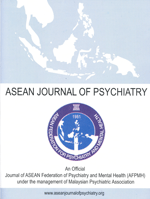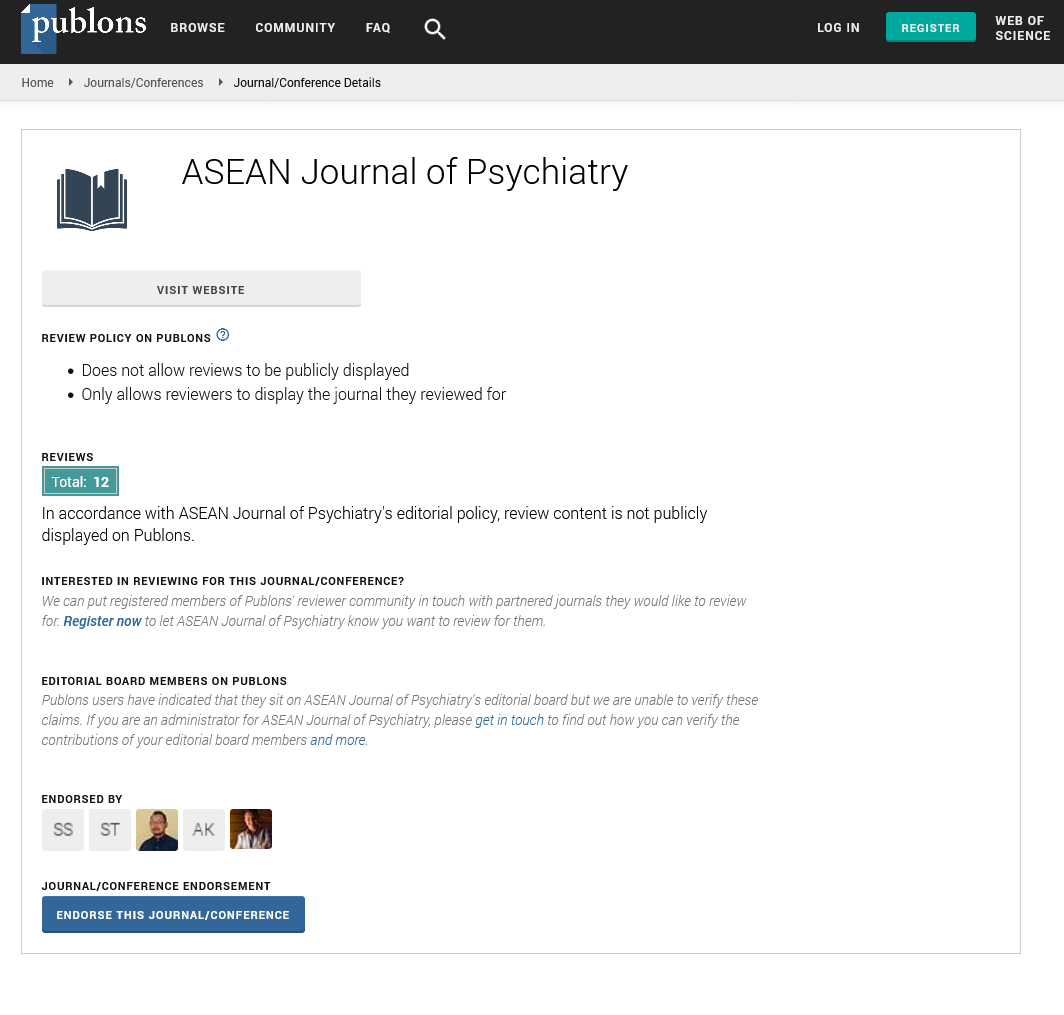


Google Scholar citation report
Citations : 5373
ASEAN Journal of Psychiatry received 5373 citations as per google scholar report
ASEAN Journal of Psychiatry peer review process verified at publons
| Journal Name | ASEAN Journal of Psychiatry (MyCite Report) | ||||
|---|---|---|---|---|---|
| Total Publications | 456 | ||||
| Total Citations | 5688 | ||||
| Total Non-self Citations | 12 | ||||
| Yearly Impact Factor | 0.93 | ||||
| 5-Year Impact Factor | 1.44 | ||||
| Immediacy Index | 0.1 | ||||
| Cited Half-life | 2.7 | ||||
| H-index | 30 | ||||
| Quartile |
|
- Anxiety Disorders
- Behavioural Science
- Biological Psychiatry
- Child and Adolescent Psychiatry
- Community Psychiatry
- Dementia
- Community Psychiatry
- Suicidal Behavior
- Social Psychiatry
- Psychiatry
- Psychiatry Diseases
- Psycho Trauma
- Posttraumatic Stress
- Psychiatric Symptoms
- Psychiatric Treatment
- Neurocognative Disorders (NCDs)
- Depression
- Mental Illness
- Neurological disorder
- Neurology
- Alzheimer's disease
- Parkinson's disease
Abstract
ASSOCIATIONS BETWEEN LOW SELF-CONTROL AND AGGRESSION AMONG MALAYSIAN MALE PRISONERS
Author(s): Mohammad Rahim Kamaluddin, Nadiah Syariani Md. Shariff,Azizah Othman, Khaidzir Hj Ismail, Geshina Ayu Mat SaatObjective: A large body of criminological research provides evidence for the role of low self-control in triggering aggressive and violent behaviour. There are actually limited cross-sectional studies in ASEAN countries that ascertain the relationships between these two constructs. The present study aimed to determine the associations between low self-control and aggression among Malaysian male prisoners. Methods: A cross-sectional study was conducted in two prisons located within Peninsular Malaysia. A total of 198 Malaysian male prisoners were recruited into this study. A guided self-administered questionnaire consisting of two psychometric instruments adapted to the Malaysian context was used, ie. Malay versions of the Self Control Scale (SCSM) and Buss Perry Aggression Questionnaire (BPAQ-M). The Pearson correlation coefficient test was employed to determine the association between low self-control and aggression. In addition, correlation was also examined between low self-control and subscales of aggression. Results: In general, findings demonstrated a positive and significant association between low selfcontrol and aggression (r = 0.52, p > 0.001). Specifically, low self-control was significantly associated with anger (r = 0.54, p < 0.001), physical aggression (r = 0.50, p < 0.001), and hostility (r = 0.33, p < 0.001). No significant correlation was observed between low self control and verbal aggression (r = 0.13, p > 0.05). Conclusion: The implications from this study include the importance of selfcontrol as a salient predictor of aggression and community intervention among at-risk groups. The directions for future research are also discussed.


























